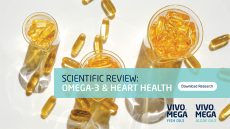Phenolic compounds may regulate glucose transport: Study
The research, published in Molecular Nutrition & Food Research, suggests that some polyphenols, phenolic acids and tannins extracted fromapples and strawberries may block the transport of glucose across intestinal tissues, potentially blunting post-meal glucose spikes.
“Our results indicate that unsweetened beverages rich in these dietary PPTs might provide a dietary mechanism to dampen, blunt or regulate intestinal sugar absorption, a potentially important factor in the management of diabetes and the metabolic syndrome,” said Susana Manzano and Prof Gary Williamson, from the School of Food Science and Nutrition at the University of Leeds in the U.K.
They added that their study is the first to show an inhibition of glucose transport across intestinal tissue by phenolicfruit extracts, and further characterize the contribution of individual phenolic components for their role in the inhibition of glucose transport.
Glucose regulation
Repeated high post meal (post-prandial) blood plasma glucose ‘spikes’ are associated with an increased risk of developing cardiovascular diseases, metabolic syndrome and type II diabetes. Reduction, or blunting, of post-prandial glucose concentration in blood is potentially beneficial.
“There is recent evidence that some bioactive compounds, in particular polyphenols, phenolic acids and tannins (PPTs), can affect the shape of the blood glucose curve … Some studies have shown that these compounds may result in an altered pattern of intestinal glucose uptake, possibly due to interactions between compounds and sugar transporters,” said the authors.
They said that PPTs have the potential to “readily affect glucose absorption in the small intestine,” noting that many polyphenols, phenolic acids and tannins can interact with certain sugar transporters – for example, inhibition of sodium-dependent glucose transporter 1 (SGLT1 – an active transport mechanism in which glucose is co-transported with sodium ion) or by inhibition of GLUT2.
Apples and strawberries, which are popular fruits for use juices, are high in flavonoids and phenolic acids, with Manzano and Williamson noting that compounds in strawberries include anthocyanins, flavonols, flavanols and ellagic acids. Apples are known to contain flavanols, hydroxycinnamic acids, dihydrochalcones, phloridzin (phloretin glucoside), and phloretin xyloglucoside.
“Data indicate that the polyphenols, phenolic acids and tannins from strawberry and apple are potent inhibitors of GLUT2 and SGLT1 at concentrations predicted after dietary ingestion. Therefore, the consumption of strawberry and apple juices could affect glucose absorption via the inhibition of glucose transport,” said the researchers.
Study details
The researchers also investigated the effects of individual PPT extracts from apples and strawberries. They observed that Quercetin-3-O-rhamnoside, phloridzin, and 5-caffeoylquinic acid contributed 26, 52 and 12 percent of inhibitory activity of the apple extract respectively, whereas only pelargonidin-3-O-glucoside was found to contribute to the total inhibitory activity in the strawberry extract.
By using sodium-containing (to activate both SGLT1 and GLUT2 glucose transporters) and sodium-free (activating GLUT2 only) conditions, the researchers showed that PPTs inhibit the action of GLUT2 receptors more than SGLT1.
“The results obtained demonstrate that polyphenols, phenolic acids and tannin-rich extracts from strawberry and apple were able to influence glucose uptake into the cells and transport … by inhibiting activities of the glucose transporters,” said the authors.
They added that the studies findings will assist in the design of future in vivo intervention studies.
Source: Molecular Nutrition & Food Research
Volume 54, Issue 12, pages 1773–1780, doi: 10.1002/mnfr.201000019
“Polyphenols and phenolic acids from strawberry and apple decrease glucose uptake and transport by human intestinal Caco-2 cells”
Authors: S. Manzano, G. Williamson












